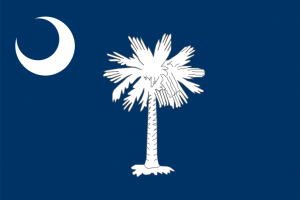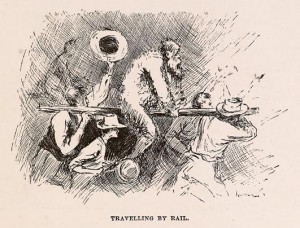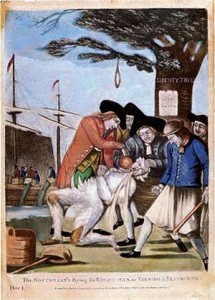From The New-York Times February 11, 1861:
EDWARD MANCHESTER, formerly of Bennington, Vt., arrived home from the Palmetto State a few days since. He says he had a choice between three things — to leave the State, to remain and join the rebels, or don a coat of tar and feathers. He chose the former, and withdrew in the night, leaving his trunk behind, and an unsettled account with his employer, who was owing him quite a sum. Two other Bennington comrades, JEROME SEYMOUR and ALBERT CUSHMAN, were not so lucky, but, as MANCHESTER says, were impressed into the service of South Carolina. He believes they will never fight against the Union.
_______________________________
More Emigrants from South Carolina
From The New-York Times February 9, 1861:
WASHINGTON, Friday, Feb. 8.
During the month past many families, whom the troubles in Charleston have driven away, have arrived in this City, some of them in very destitute circumstances, and whose troubles are greatly enhanced by the prevailing cold weather, so unlike the mild climate from which they have come. Among the most necessitous cases which have been brought to light is that of Mr. BOYCE, wife and two children, who came away from Charleston about two weeks since. They found temporary lodgings at No. 29 Greenwich-street, where, on account of their great destitution, and the absence of fire and food, the wife and children were soon taken sick. Dr. ANDREWS, Police Surgeon for the lower districts, learned their situation, and has attended the family. Mr. BARTLETT, proprietor of the Washington Hotel, sent them a stove and some fuel, and has been kind to them. The wife still continues dangerously ill.
Yesterday an old lady, of 60 years and upwards, appeared at the Eighteenth Ward station house for relief. Her daughter, who had lost her husband in Charleston, fearing that her two children would starve there, had sent the little ones to her to be cared for. She was very poor, having to rely wholly upon what she could earn by doing occasional work at service. The policemen verified the truth of her story, and gave her temporary relief. These cases appeal strongly to he humane.
Check out The National Park Service for information about the Sesquicentennial of the South Carolina Flag. You can see a drawing of the flag adopted on January 28, 1861 (the orientation of the crescent moon changed in 1910). And yes, the choice of the 1861 flag involved a prior event in Charleston harbor.



